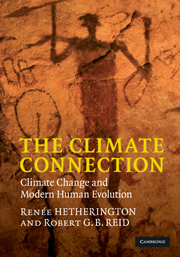1 - Introduction
Published online by Cambridge University Press: 05 August 2012
Summary
The climate connection
Until the early nineteenth century, there was a widespread belief that the Biblical Flood was the greatest climatic catastrophe in human history. The deluge was supposedly God's punishment for the sins of man, and the story of Noah is the account of a family that in the face of mockery took drastic steps to ensure its survival and the preservation of life on Earth. This allegory was found to be an oversimplification when Baron Cuvier's studies of the Paris basin suggested that, for whatever reason, a series of deluges had altered the environment, so that it was, in turn, dry land, covered with fresh water, or inundated by the sea. However, beginning in 1836, studies of glaciers by Cuvier's student, Louis Agassiz, provided an alternative explanation for phenomena thought to be caused by flooding. Agassiz attributed glaciation to the divine hand, referring to it as ‘God's Plough’. About 20 years later, Charles Darwin gave Agassiz's work an evolutionary interpretation, but Agassiz could not see the connection between climate and evolution.
Darwin's own work subsumed adaptation to climatic conditions as part of evolution, but he did not expand on the effects that the environment has on evolution. The Origin of Species (1872) is particularly weak on the evolution of physiological and behavioural adaptability; factors that are crucial for the survival of individuals during severe environmental changes. Furthermore, because he was a gradualist, Darwin paid little or no attention to catastrophic events in his theory.
- Type
- Chapter
- Information
- The Climate ConnectionClimate Change and Modern Human Evolution, pp. 1 - 12Publisher: Cambridge University PressPrint publication year: 2010



